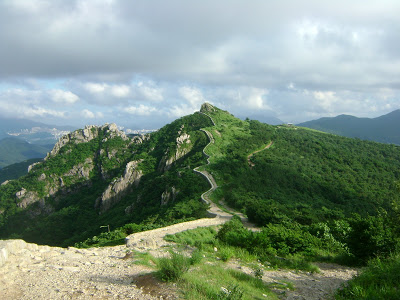 “Johnny and I had a cabbie take us to a mountain fortress and we climbed around the mountain and followed the old stone wall up and down the mountain for miles. It was awesome, and the views were breathtaking. There were watchtowers and gates and everything. And then we came down the mountain from the north and saw a temple halfway down the mountainside.” —email from Chris July 23 as the USS George Washington pulled out of Busan, South Korea.
“Johnny and I had a cabbie take us to a mountain fortress and we climbed around the mountain and followed the old stone wall up and down the mountain for miles. It was awesome, and the views were breathtaking. There were watchtowers and gates and everything. And then we came down the mountain from the north and saw a temple halfway down the mountainside.” —email from Chris July 23 as the USS George Washington pulled out of Busan, South Korea. 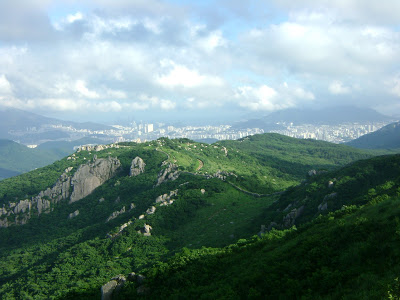 Japanese invasions of South Korea in 1592 and the Chinese invasion of 1636 heightened awareness for the need of national defence, especially against sea attacks. So this 17-kilometer wall was built as part of the 8.2-square kilometer mountain fortress completed in 1702, the 28th year of the reign of King Sukjong. But naval commander Yi Jihyeong recorded in 1667 evidence of an even older fortress on the same site. Predictably, the fortress was damaged during the Japanese occupation of 1910-1945 and later restored. The 100-year anniversary of the beginning of that occupation recently made headlines across Japan…it’s still a bit of a sore subject for some people.
Japanese invasions of South Korea in 1592 and the Chinese invasion of 1636 heightened awareness for the need of national defence, especially against sea attacks. So this 17-kilometer wall was built as part of the 8.2-square kilometer mountain fortress completed in 1702, the 28th year of the reign of King Sukjong. But naval commander Yi Jihyeong recorded in 1667 evidence of an even older fortress on the same site. Predictably, the fortress was damaged during the Japanese occupation of 1910-1945 and later restored. The 100-year anniversary of the beginning of that occupation recently made headlines across Japan…it’s still a bit of a sore subject for some people. 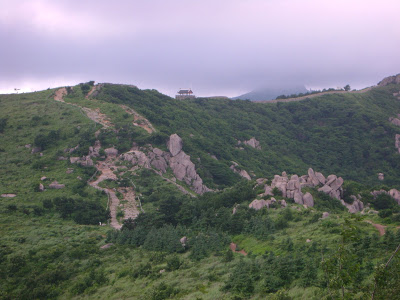
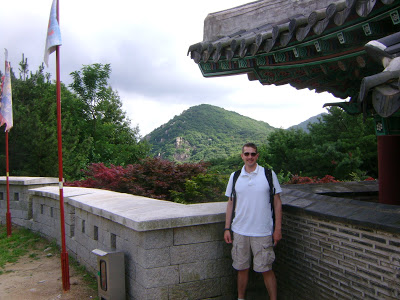 The East Gate of Geumjeongsanseong Fortress sits on a 415 meter high pass on Geumjeongsan Mountain. An inscription reads, “The East Gate was built in one month in the fall of 1807, the 7th year of the reign of King Sunjo of the Joseon Dynasty.”
The East Gate of Geumjeongsanseong Fortress sits on a 415 meter high pass on Geumjeongsan Mountain. An inscription reads, “The East Gate was built in one month in the fall of 1807, the 7th year of the reign of King Sunjo of the Joseon Dynasty.” 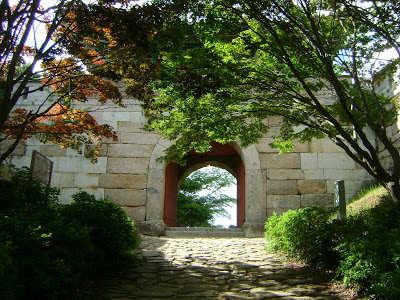 The Legend of Geumsaem (Gold Spring)
The Legend of Geumsaem (Gold Spring)
“On the summit of Geumjeongsan Mountain, there is a rock which is as tall as three people standing one on top of the other, and at the top of the rock, there is a fountain. The fountain is always full of water of a golden hue, and never runs dry even during period of drought. A certain legend says that a golden fish once rode on five-colored clouds and descended to this fountain from the Brahma heaven to play there. Thus, the mountain on which the fountain was located was named Geumjeong (Gold Spring) Mountain, and the temple on the mountain was named Beomeo (Nirvana Fish).” 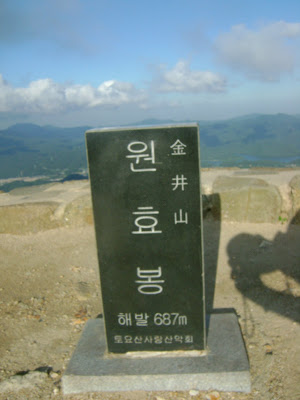
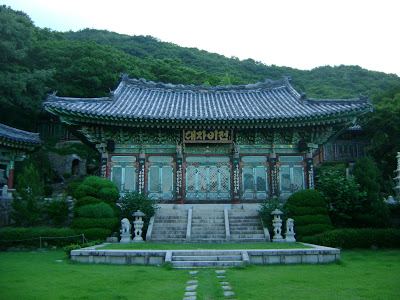 Beomeosa Temple is 1.6 kilometers from the rugged North Gate.
Beomeosa Temple is 1.6 kilometers from the rugged North Gate. 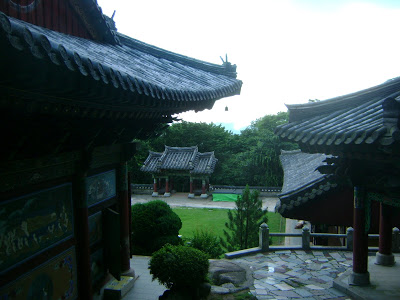 Geumjeongsan (the mountain) peaks at 801.5 meters above sea level—one of many medium-sized Korean mountains. But culturally it’s the city of Busan’s guardian mountain. It nurtures the patriotic spirit and offers key water sources for the regions animals, crops, trees and people. Justin, this info is for you: the rocks and sediments in this mountain’s streams get bigger and bigger as the streams progress down the mountainside. If Justin were writing this, maybe he could confirm this is an interesting geographical feature that usually appears in alpine regions, suggesting temperate South Korea was previously chilly.
Geumjeongsan (the mountain) peaks at 801.5 meters above sea level—one of many medium-sized Korean mountains. But culturally it’s the city of Busan’s guardian mountain. It nurtures the patriotic spirit and offers key water sources for the regions animals, crops, trees and people. Justin, this info is for you: the rocks and sediments in this mountain’s streams get bigger and bigger as the streams progress down the mountainside. If Justin were writing this, maybe he could confirm this is an interesting geographical feature that usually appears in alpine regions, suggesting temperate South Korea was previously chilly. 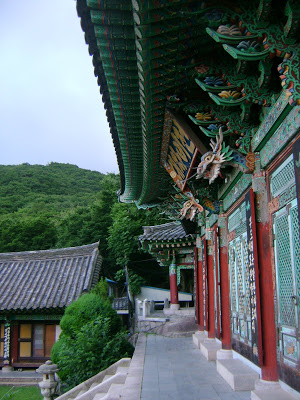
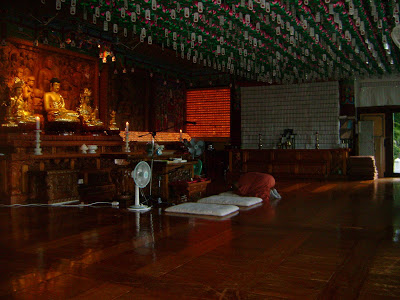 The host Buddha enshrined in the Daeungjeon, or main shrine, at Beomeosa Temple is Sakyamuni, with two attending Bosals. The brackets, eaves and transoms are gracefully structured, and together with the workmanship of the colorful canopy, alter and decorated display panel, make this hall one of the most outstanding examples of Buddhist architecture and woodwork of the Joseon Period (1392-1910).
The host Buddha enshrined in the Daeungjeon, or main shrine, at Beomeosa Temple is Sakyamuni, with two attending Bosals. The brackets, eaves and transoms are gracefully structured, and together with the workmanship of the colorful canopy, alter and decorated display panel, make this hall one of the most outstanding examples of Buddhist architecture and woodwork of the Joseon Period (1392-1910). 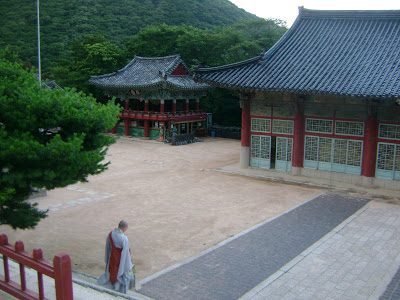 A tale of Buddhist Supreme Master Uisang, as recorded in Memorabilia of the Three Kingdoms:
A tale of Buddhist Supreme Master Uisang, as recorded in Memorabilia of the Three Kingdoms:
“The Japanese military was preparing to invade Silla via the East Sea with 100,000 warships. Then, a troubled King Munmu had a dream in which a deity appeared and told the him that if he went to Geumsaem together with Buddhist Supreme Master Uisang to pray for seven days, he would be able to defeat the Japanese. He followed the deity’s advice, whereupon the earth shook, and Buddha, the Heavenly King, and the Munsu Child Buddha appeared. They went to the East Sea together to defeat the Japanese troops. Greatly delighted, King Munmu promoted Uisang, and erected a Beomeosa Temple below Geumsaem.” 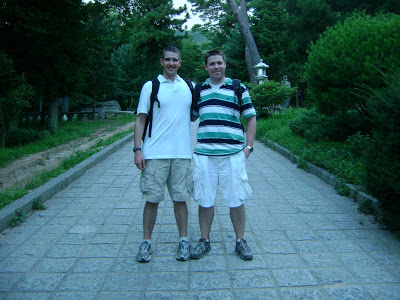
Where Globe-Trotting meets Beach-Combing
